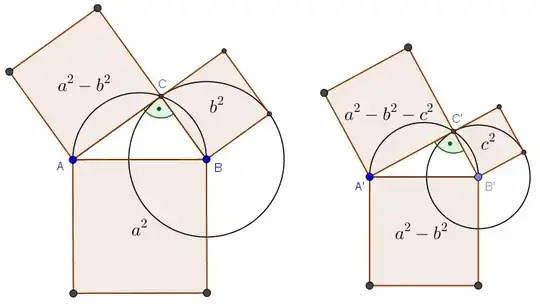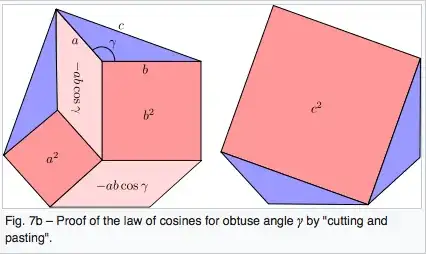Given are three squares of side lengths $a$, $b$ and $c$ with $a>b>c$. Construct (with compass and straightedge) a square of the area $a^2-b^2-c^2$!
I have thought about "cutting" the two smaller squares into pieces and arranging them inside the big square in such a way that the space left is a square, too.
Do you have any ideas?

